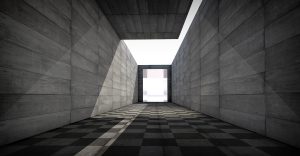In our exploration of the best practices for sustainable architecture in hot climates, we delve into innovative solutions that not only combat soaring temperatures but also promote environmental harmony. We discuss the importance of using local materials, optimizing natural ventilation, and incorporating green roofs and walls to maintain cooler indoor temperatures. By embracing these strategies, we can build structures that are both eco-friendly and energy-efficient, ensuring a comfortable living environment while minimizing our ecological footprint. Let’s work together to pave the way for a greener, more sustainable future in hot climates. Have you ever wondered what the best practices for sustainable architecture are when it comes to hot climates? As we navigate the challenges posed by rising global temperatures, it’s crucial to consider how we can build in a way that keeps us comfortable while minimizing environmental impact. Sustainable architecture is not only about reducing energy consumption but also about enhancing our quality of life. In this article, we’ll explore various strategies, materials, and designs that can help us achieve these goals.

Understanding the Challenges of Hot Climates
Before we delve into the best practices, it’s essential to understand the unique challenges posed by hot climates. Regions with high temperatures often experience stronger solar radiation, higher cooling requirements, and sometimes, limited water resources. These conditions can put a strain on both natural ecosystems and human comfort.
Solar Radiation and Heat Gain
Solar radiation is one of the primary concerns in hot climates. Buildings absorb this radiation, leading to increased indoor temperatures. This phenomenon necessitates higher energy consumption for cooling systems, which can be both costly and environmentally detrimental.
Limited Water Resources
Many hot climates also suffer from limited water resources. This scarcity makes it vital to implement water-saving measures and technologies in our building designs. Not only does this conservation help the environment, but it also reduces the long-term operational costs of the building.
Energy Consumption for Cooling
Cooling systems are indispensable in hot climates, but they consume a significant amount of energy. To make matters worse, the more we rely on fossil fuels for this energy, the more we contribute to global warming, creating a vicious cycle.
Best Practices for Sustainable Architecture in Hot Climates
To address these challenges, we can adopt several best practices that focus on mitigating heat gain, optimizing water use, and reducing energy consumption. The following strategies can serve as guidelines for architects, builders, and homeowners alike.
Passive Solar Design
Passive solar design is all about harnessing natural energies to maintain a comfortable indoor environment. It involves strategic placement of windows, walls, and floors to collect, store, and distribute solar energy in the form of heat in the winter while rejecting solar heat in the summer. Here are some core techniques:
- Orientation: The orientation of the building can significantly impact its energy efficiency. Buildings should be oriented to minimize direct sunlight during the hottest parts of the day.
- Shading: Implementing shading devices like overhangs, louvers, or vegetation can block unwanted solar gain.
- Thermal Mass: Using materials that absorb and release heat slowly can help moderate indoor temperatures.
Natural Ventilation
Leveraging natural ventilation can dramatically reduce the need for mechanical cooling systems. This approach involves designing buildings in a way that encourages natural airflow, which can cool indoor spaces more efficiently. Some strategies include:
- Cross Ventilation: Design windows and openings on opposite sides of the building to facilitate cross breezes.
- Stack Effect: Utilize vertical spaces and openings to promote upward air movement, which helps hot air escape and pulls cooler air in.
- Atriums and Courtyards: Incorporating open spaces within the building can enhance airflow and create cooler microenvironments.
Insulation and Reflective Materials
Effective insulation is crucial in hot climates to keep indoor spaces cool. Reflective materials can also minimize heat gain by deflecting solar radiation.
- Roof Insulation: High-quality roof insulation can significantly reduce heat entering the building.
- Reflective Coatings: Applying reflective coatings or paints on the roof and exterior walls can help deflect solar radiation.
- Windows and Glazing: Using double or triple glazing, especially with low-emissivity (low-E) coatings, can minimize heat transfer.
Green Roofs and Walls
Green roofs and walls are not only visually appealing but also incredibly effective at reducing heat. Vegetation cools the air through evapotranspiration and provides additional insulation.
- Extensive Green Roofs: These roofs feature a shallow layer of soil and low-maintenance plants, making them lightweight and easy to install.
- Intensive Green Roofs: Featuring deeper soil and a wider variety of plants, these roofs offer more significant insulation benefits but require more structural support.
- Green Walls: Vertical gardens can be installed on building exteriors to reduce heat gain and improve air quality.
Efficient HVAC Systems
While natural ventilation and insulation can reduce the reliance on mechanical cooling, efficient HVAC systems are still essential in hot climates. Here are some tips to enhance their efficiency:
- Zoning: Divide the building into different zones with separate HVAC controls to optimize energy use.
- High-Efficiency Units: Invest in HVAC systems with high SEER ratings (Seasonal Energy Efficiency Ratio).
- Smart Thermostats: Utilize smart thermostats to optimize temperature settings and reduce energy consumption.
Sustainable Building Materials
The choice of building materials can have a significant impact on the sustainability of a structure. In hot climates, it’s crucial to select materials that minimize heat gain and have a low environmental footprint.
- Local Materials: Using locally sourced materials reduces transportation energy and supports the local economy.
- Recycled Materials: Incorporating recycled materials can significantly reduce the environmental impact of construction.
- High Albedo Materials: These materials reflect more sunlight and absorb less heat, helping to keep the building cooler.
Water Conservation Techniques
Implementing water-saving measures is crucial in hot climates where water scarcity is a concern. Here are some effective techniques:
- Rainwater Harvesting: Collect and store rainwater for non-potable uses such as irrigation and toilet flushing.
- Greywater Recycling: Reuse greywater (e.g., from sinks and showers) for landscaping and other non-potable applications.
- Low-Flow Fixtures: Install low-flow faucets, showerheads, and toilets to reduce water consumption.
Renewable Energy Sources
Harnessing renewable energy sources can help offset the energy demands of cooling systems and reduce the overall environmental impact.
- Solar Panels: Install photovoltaic panels to generate electricity from sunlight.
- Solar Water Heaters: Use solar energy to heat water, reducing the need for conventional water heating systems.
- Wind Turbines: In areas with consistent wind patterns, small-scale wind turbines can provide a supplementary energy source.

Case Studies of Sustainable Architecture in Hot Climates
To illustrate how these best practices can be implemented effectively, let’s examine some case studies from around the world. These examples highlight innovative designs and technologies that have successfully addressed the challenges posed by hot climates.
Masdar City, United Arab Emirates
Masdar City is a groundbreaking example of sustainable urban development. Located in one of the hottest regions on the planet, Masdar City incorporates a range of sustainable practices:
- Orientation and Shading: Buildings are oriented to maximize shade and minimize exposure to direct sunlight. Shading devices and structures made from locally sourced materials help reduce heat gain.
- Renewable Energy: The city relies heavily on solar energy, with extensive installations of photovoltaic panels and solar water heaters.
- Natural Ventilation: Wind towers and narrow streets facilitate natural ventilation, reducing the need for mechanical cooling.
Bullitt Center, Seattle, USA
While Seattle isn’t known for its hot climate, the Bullitt Center exemplifies practices that are applicable to hot regions:
- High-Efficiency Insulation: The building uses advanced insulation and reflective coatings to minimize heat gain.
- Green Roof: An extensive green roof provides natural insulation and reduces the urban heat island effect.
- Rainwater Harvesting: The building captures and treats rainwater for all its water needs, showcasing how urban sustainability can be achieved.
CEMEX Building, Monterrey, Mexico
The CEMEX building in Monterrey demonstrates effective use of local materials and passive design:
- Local Materials: The building utilizes locally sourced, high-albedo materials to reflect solar radiation and reduce heat gain.
- Passive Cooling: The design incorporates large overhangs and courtyards to facilitate natural cooling and ventilation.
- Water Conservation: A comprehensive rainwater harvesting system supplies water for non-potable uses, reducing the building’s reliance on municipal water sources.

Conclusion
As we face increasing temperatures and growing environmental concerns, sustainable architecture in hot climates is more important than ever. By implementing best practices such as passive solar design, natural ventilation, efficient insulation, green roofs and walls, efficient HVAC systems, sustainable building materials, water conservation techniques, and renewable energy sources, we can create buildings that are both comfortable and environmentally friendly.
These strategies not only help mitigate the effects of hot climates but also contribute to the broader goal of reducing our ecological footprint. As we’ve seen in the case studies, innovative designs and technologies can make a significant difference. By embracing these practices, we can build a more sustainable future for ourselves and future generations. Let’s work together to create buildings that harmonize with their environment, offer comfort, and pave the way for a greener, cooler world.



